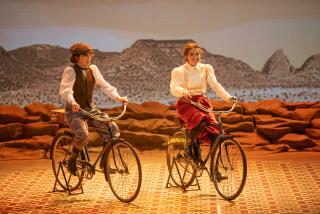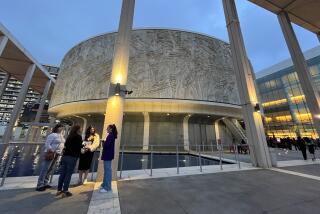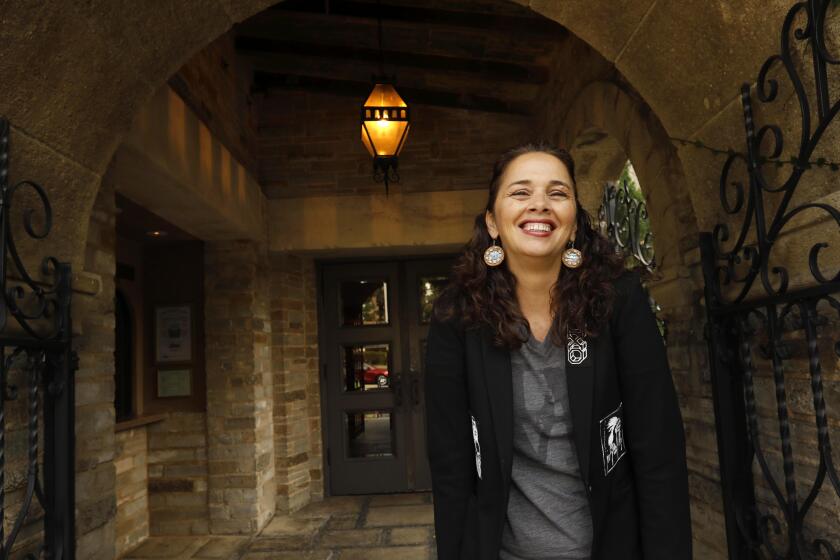You paid how much for that ticket!?
How much does it cost to see a live performance in Los Angeles? Increasingly, the answer is “it depends.”
Under Center Theater Group’s new dynamic pricing, the best seats were priced at $120 when it was first announced that the Ahmanson Theatre’s staging of the dark comedy “God of Carnage” would feature the original Broadway cast. But those who waited wound up paying as much as $200 for the same seat locations as Jeff Daniels, Marcia Gay Harden, James Gandolfini and Hope Davis reprised their roles.
But dynamic pricing works both ways. For “God of Carnage,” orchestra seats under an overhang turned out to be relatively unpopular, and early birds who’d scored them for $120 may have found themselves sitting next to latecomers who paid $49 each.
Taking its cue from the airline industry, more arts groups are adopting dynamic pricing, in which the cost of a theater or concert ticket escalates for hot-selling shows, while slack demand brings bargains. The concept, which Ticketmaster will soon be using at pop concerts too, has arrived in a big way on the L.A. scene with its adoption by Center Theatre Group. Starting this fall, the struggling UCLA Live performance series will look to dynamic pricing to help revive flagging box office proceeds for concerts, dance and celebrity speaking engagements at 1,800-seat Royce Hall. The for-profit Pantages Theatre has used dynamic pricing since “Wicked” hunkered down in 2007 for a nearly two-year run.
Ten years ago, the Broadway musical “The Producers” opened commercial theater producers’ eyes to the benefits of charging a large premium for the most coveted seats. It’s not clear who first tried the concept in the nonprofit arts world, where the decision to go with dynamic pricing can be far more fraught, given the fact that the nonprofits’ mission is not to maximize earnings but to stay solvent while serving their community. Experts say Seattle’s Pacific Northwest Ballet and the Chicago Symphony were among the early nonprofit users during the early 2000s.
In Southern California, Center Theater Group already has reaped some eye-popping returns: “God of Carnage” grossed $7.8 million, more than double the previous box office record for a nonmusical play at the Ahmanson. Without dynamic pricing, the take would have been $1.5 million less, said Jim Royce, CTG’s longtime marketing director.
In the most sophisticated versions, the price fluctuations are guided by computers programmed to constantly sift sales data compiled from online and telephone purchases. Algorithms are applied to information on how fast each seat is selling, compared to past norms. The result can be a parade of price revisions from the day tickets first go on sale until the last curtain falls.
With “God of Carnage,” “we were selling tickets like nobody’s business,” at the opening price of $120 for the best seats, Royce said. As dynamic pricing kicked in, the cost of a premium, front-and-center seat moved to $130, then $175, and eventually to $200. The increases helped drive the average ticket price to $79.89.
Now playing is another hot show, “Les Miserables,” and the best seats for weekend performances again are going for $200.
“But,” Royce notes, “as a nonprofit, we also have a mandate to make sure that some prices are affordable.”
So, while it raises prices for the most desirable seats, the company still reserves some at $20 for each performance under its Hot Tix program. Also, CTG has refrained from applying dynamic pricing to the 515-seat Ahmanson balcony, keeping prices at $42 and $65.
Jeff Loeb, associate general manager of Hollywood’s for-profit Pantages Theatre, says that even though dynamic pricing is in effect, a policy of selling some orchestra seats at $25 for each performance hasn’t changed. Loeb said there hasn’t been any backlash from patrons. “We focused on communicating that the price you’re buying at today is not necessarily the price it was yesterday, or what it will be tomorrow,” he said. “Hopefully, we’ve put the right offer to the right patron at the right time.”
Performing arts presenters have watched warily over the last decade or so as their customers have been less willing to buy subscriptions, and have waited longer to purchase tickets to individual shows.
Among other things, dynamic pricing is a way to re-train all but the least price-conscious arts-goers to start buying early again. If customers know that prices for the hottest shows will rise if they wait, they would be motivated to get in at the ground-floor price, or to buy a season’s subscription before single tickets go on sale and the roller coaster ride begins.
Royce doesn’t say so explicitly, but there’s a kind of Robin Hood aspect to dynamic pricing. If a company extracts more of what the market will bear from high-rollers, it can use the revenue gains for other purposes — such as maintaining some lower prices to ensure access for the less well-off, or using the additional earnings to float edgier productions not intended to have mass commercial appeal.
For Center Theatre Group, the Ahmanson, with its typical parade of touring Broadway productions and new musicals aspiring toward Broadway runs, has always been a cash cow that helps support less commercial plays at the 739-seat Mark Taper Forum and the 315-seat Kirk Douglas Theatre.
But not all companies are going for it. South Coast Repertory in Costa Mesa says it has no plans to get on board. The Segerstrom Center for the Arts, which looks to touring Broadway productions to generate extra revenue that can support its classical music and dance series, says that it has tried dynamic pricing on a few of its Broadway shows, that it but won’t extend the practice to all musicals or to other genres.
The Los Angeles Philharmonic stuck a toe in the water this season, applying dynamic pricing to “a handful” of concerts, spokeswoman Sophie Jefferies said. Although “it’s something we’re watching and monitoring,” she added that it’s not being adopted as a business model.
Los Angeles Opera, however, is “seriously considering implementing it,” said marketing vice president Diane Rhodes Bergman.
Philippe Ravanas, who chairs the arts, entertainment and media management department at Chicago’s Columbia College, said he’s been preaching dynamic pricing to nonprofits since seeing the role it played in helping the Chicago Symphony dig out of a financial hole in the early 2000s. He notes a vast increase in receptivity since late 2008.
“Before the financial crisis, the idea was perceived as rather inappropriate for all sorts of reasons,” Ravanas said, “from ‘this would never work’ to ‘it’s completely unethical’ and ‘we don’t have the time.’ I’ve seen a radical change in the willingness to experiment, to explore and adopt more sophisticated pricing policies since the economy collapsed.”
Rick Lester, a former orchestra administrator who is chief executive of TRG Arts, a Colorado Springs, Colo., consulting company, said clients he steered into dynamic pricing last year saw a 24% average increase in their earnings because of higher prices for some seats and increased sales for others.
“I don’t think there’s anything inconsistent” about nonprofits wanting to improve their earnings, he said. “As business people who work in the arts, we have an obligation to the long-term health of our organizations, and to pay our artists as much as the community can afford.”
More to Read
The biggest entertainment stories
Get our big stories about Hollywood, film, television, music, arts, culture and more right in your inbox as soon as they publish.
You may occasionally receive promotional content from the Los Angeles Times.







